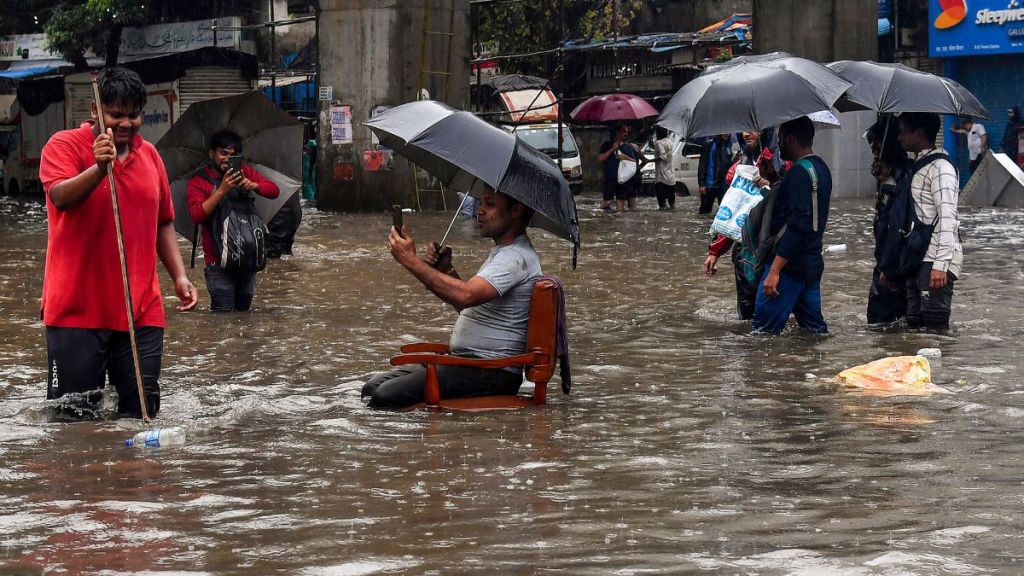Mumbai has been under a heavy spell of rain since August 16. With streets waterlogged and schools shut for two days now, the maximum city has come to a complete standstill. The torrential rain not only impacted public transport like buses, local trains, and flights, but also the movement of residents. The Indian Meteorological Department (IMD) extended the red alert warning for several districts of Maharashtra. However, the situation turned grim when houses were left inundated, and roads were submerged under rainwater.
While the Brihanmumbai Municipal Corporation (BMC) deployed rescue workers across regions to provide relief from the southwest monsoon upheaval, vehicles were left stranded amid the waterlogged city. Waist-deep water and high tide threats in Mumbai have kept the city on high alert. But, is this normal?
Mumbai weather update: Why the extremely heavy rain?
The ongoing spell of heavy rain in Mumbai is influenced by larger weather systems at play. A low-pressure zone that developed over the Bay of Bengal, together with an east–west trough stretching across the Arabian Sea, has created the perfect setup for relentless showers. These two systems have been pumping vast amounts of moisture into the atmosphere, fuelling continuous and intense rainfall across the region, with Mumbai bearing the brunt.
The monsoon trough further passes through Maharashtra and adjoining areas, which maintains a favourable environment for sustained rainfall. Wind becomes a major contributing factor as an upper air cyclonic circulation has been foreseen by the IMD over the northeast Arabian Sea and adjoining Gujarat. Conversely, a cyclonic development is also predicted along the Bay of Bengal in Odisha as the state prepares for adverse conditions.
A shear zone over the Indian region and an offshore trough running from south Konkan to north Kerala at the mean sea level enhance the moisture and instability. It leads to further heaviness and damp conditions, proliferating the rainfall. Seasonal rainfall totals have already crossed 1000 mm at official observatories, including Colaba (1257 mm) and Santacruz (1764 mm) till August 17
Over the past 24 hours, several parts of the city recorded more than 200 mm of rain, falling under the “extremely heavy” category. The sheer volume of water overwhelmed the city’s infrastructure, forcing schools, colleges, and even government offices to shut down on Tuesday. Life in India’s financial capital came to a grinding halt as residents waded through waterlogged streets, battling the impact of yet another monsoon deluge.
Mumbai rains: Key updates
1. Non-stop rain for more than 24 hours has left the lifeline of the city, the local train, hampering the harbour and central lines.
2. Six people died and hundreds were evacuated from the rain-hit Maharashtra as Chief Minister Fadnavis took stock of the situation and facilitated rescue efforts, reported India Today.
3. Red alert districts: Pune, Satara, and Palghar in Maharashtra
4. Orange alert: Nashik, Thane, Raigad, Sindhudurg, Ratnagiri, and Kolhapur.
5. Shocking visuals appear from around the city, where a car nearly capsized near the Andheri subway. Two people were still stuck inside as people struggled to rescue them.

